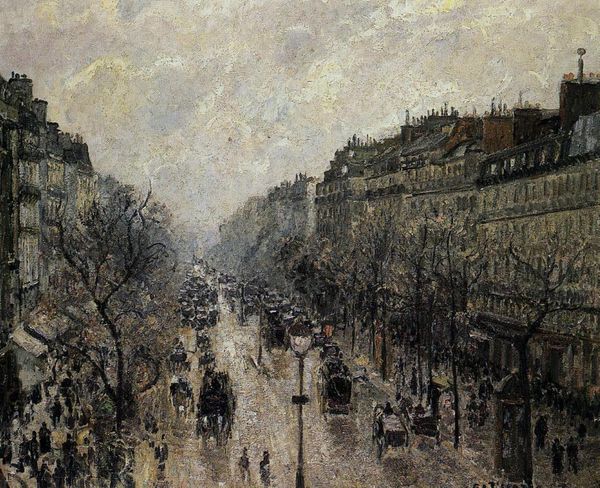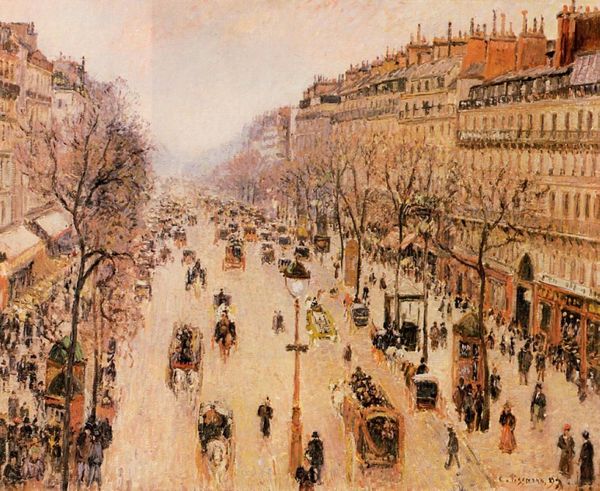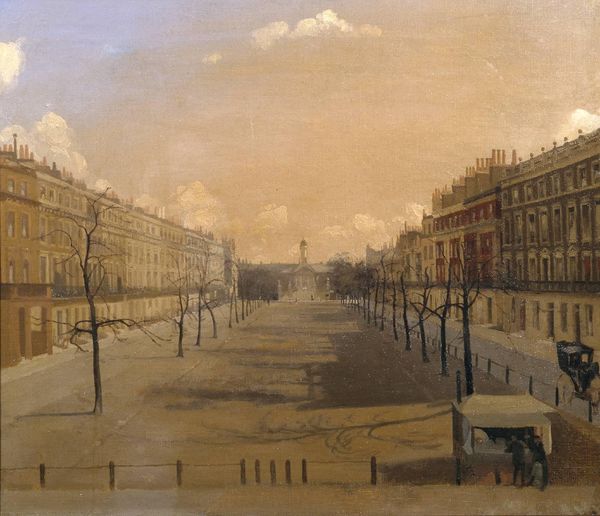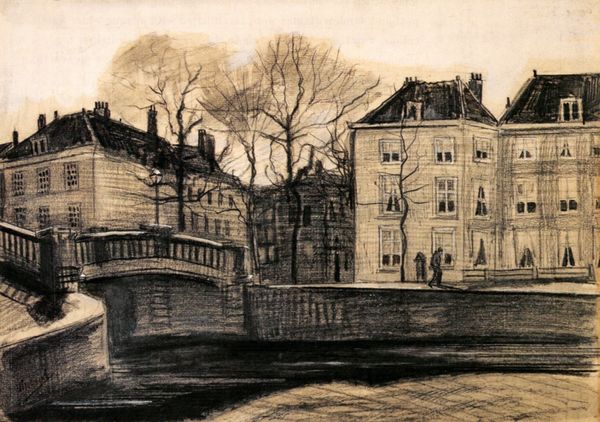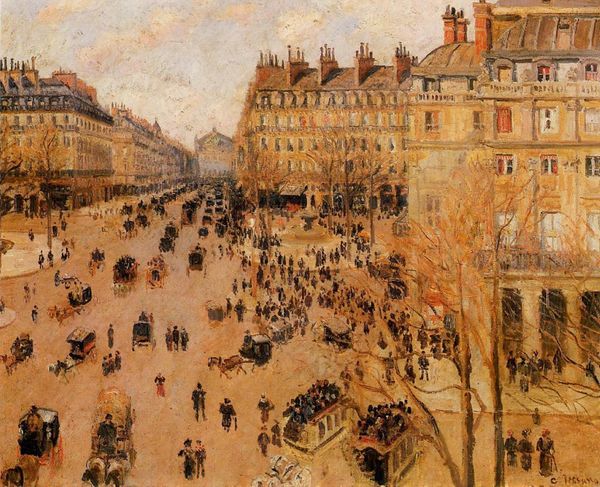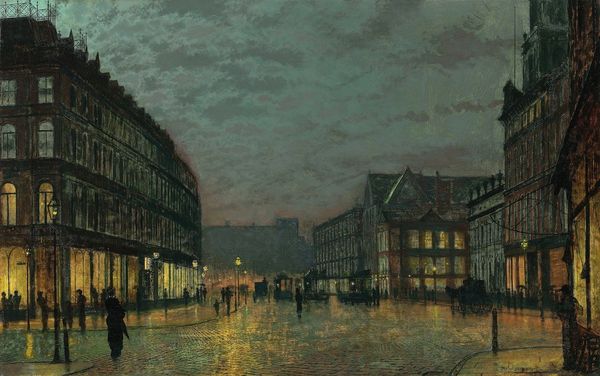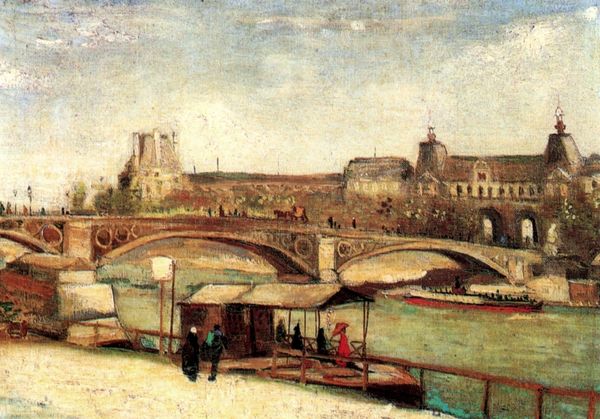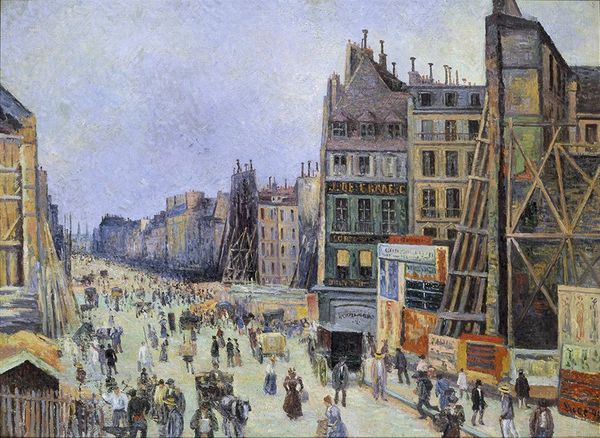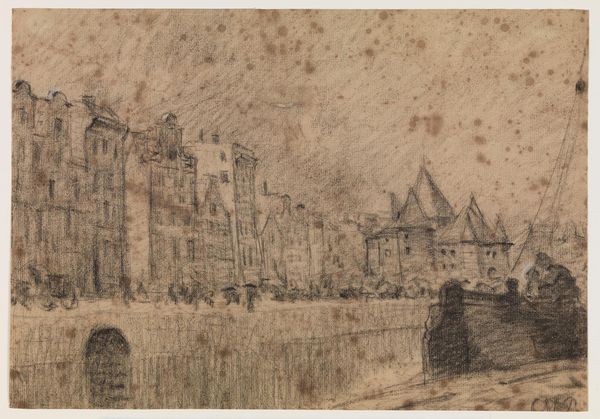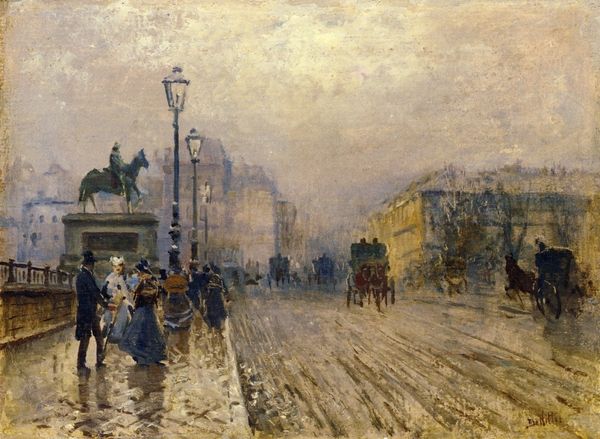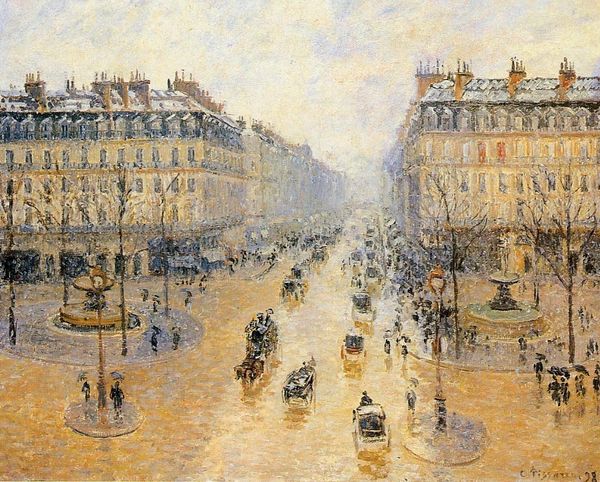
drawing, pencil, graphite
#
portrait
#
drawing
#
landscape
#
charcoal drawing
#
oil painting
#
pencil
#
graphite
#
cityscape
#
post-impressionism
Dimensions: 45.5 x 55 cm
Copyright: Public domain
Curator: Let's discuss van Gogh's "The Boulevard de Clichy," a cityscape rendered around 1887, during his time in Paris. It appears he used graphite, pencil, and charcoal on paper. Editor: Immediately striking is its melancholic air. The subdued tones and stark lines feel almost barren, despite the cityscape bustling with unseen activity. There's a definite somber mood established. Curator: Yes, and note the texture achieved through layering different drawing materials. The materiality of graphite alongside charcoal and pencil enables Van Gogh to establish varying depth, a practice very much in line with the labor of everyday craftsmanship. You almost see him in that moment working with those materials and translating his lived experience. Editor: Agreed, although I read it somewhat differently. Beyond its construction, I also sense Van Gogh hinting at the socio-economic divisions of late 19th-century Paris. The people feel anonymous, swallowed by the architecture. It seems to comment on the isolation individuals can experience in burgeoning metropolitan landscapes. Curator: Fascinating perspective. Thinking materially, one could argue the repetitive hatching mimics industrial manufacturing; yet his hand prevents it from becoming standardized. Even the act of choosing such modest materials says something about Van Gogh himself as the art worker, right? Editor: Precisely. And who gets represented? It’s also interesting to me that we don't see the opulence usually depicted in Impressionistic city scenes. It really draws one to consider issues surrounding social stratification, power structures, and class dynamics during that time. It challenges accepted notions. Curator: Absolutely. His use of drawing medium transforms what is traditionally high art. A really subtle tension between fine art and working labor comes through. Editor: Ultimately, whether considering material realities or cultural critiques, this artwork provides a fascinating glimpse into Paris in the late 1880s—offering viewers much to consider in terms of technique and social commentary. Curator: Indeed; examining process illuminates deeper engagement with materials of artmaking, broadening its appreciation beyond simple aesthetics. It’s almost that constant friction of materials between hand and subject in the working-class sector of France.
Comments
No comments
Be the first to comment and join the conversation on the ultimate creative platform.

